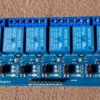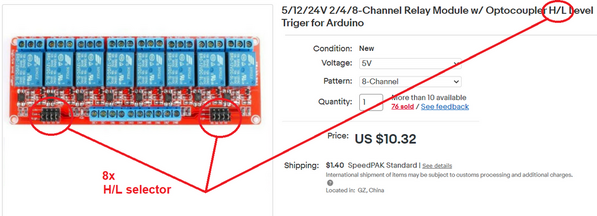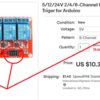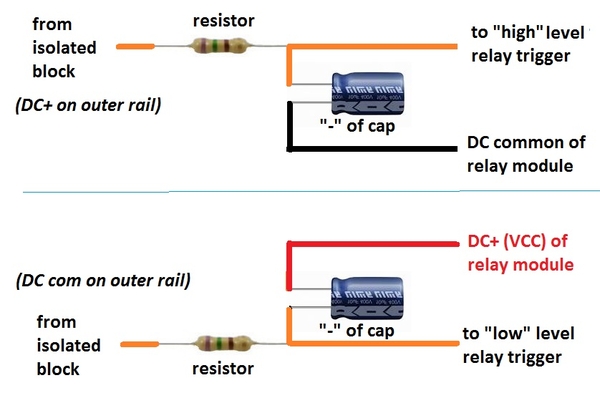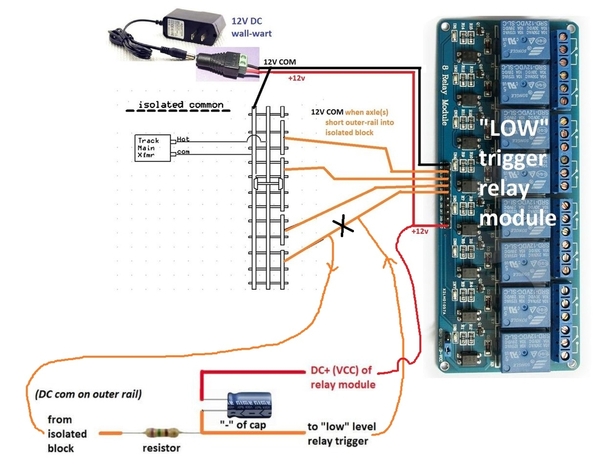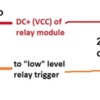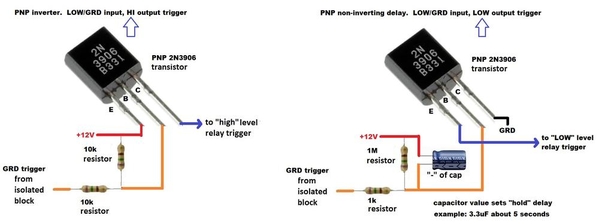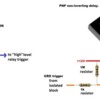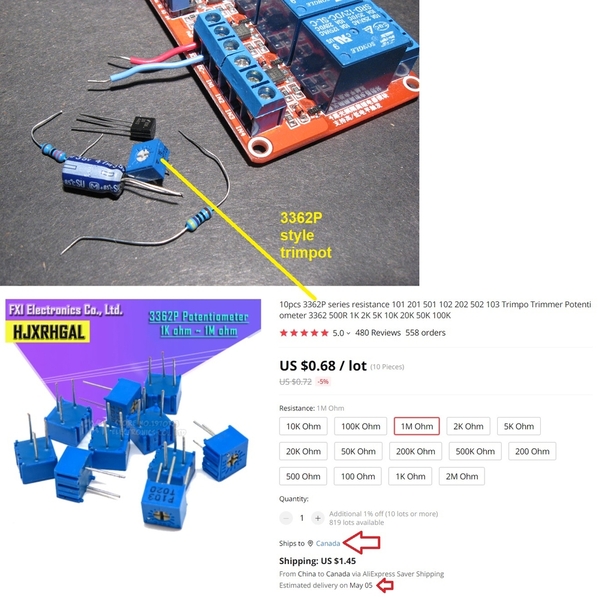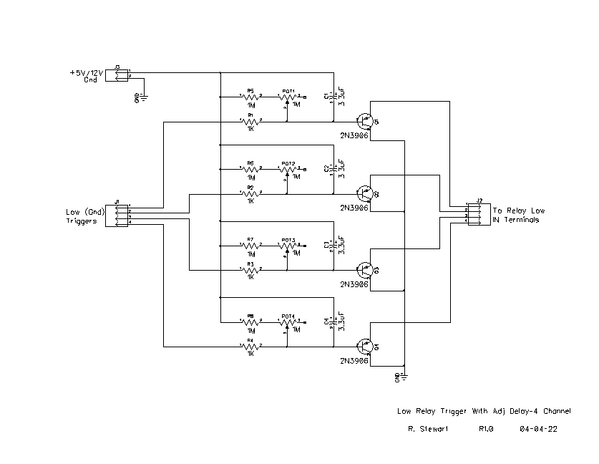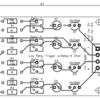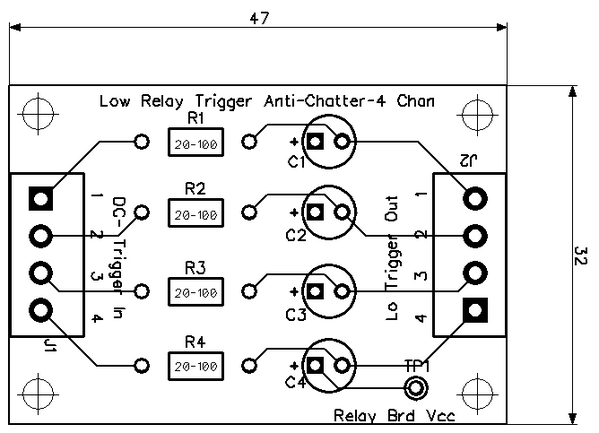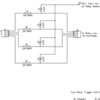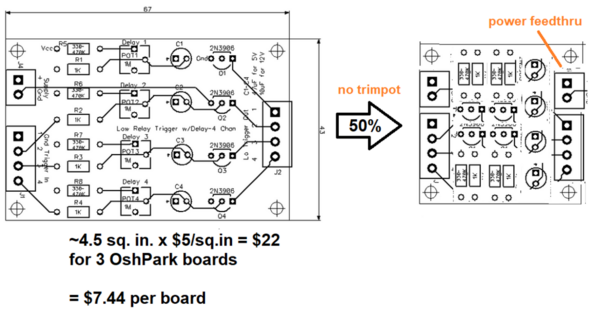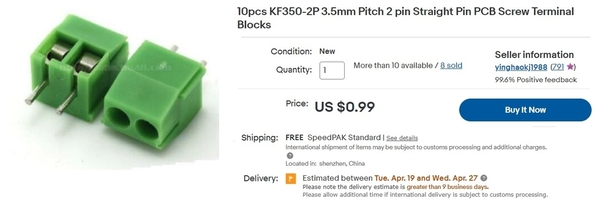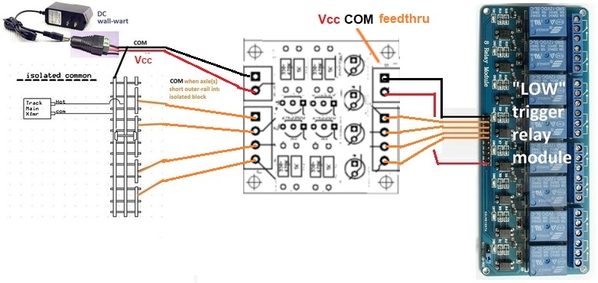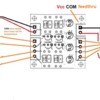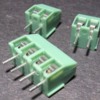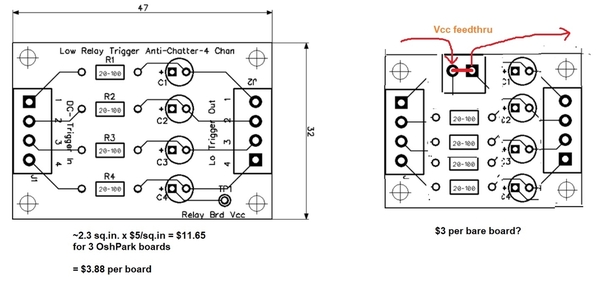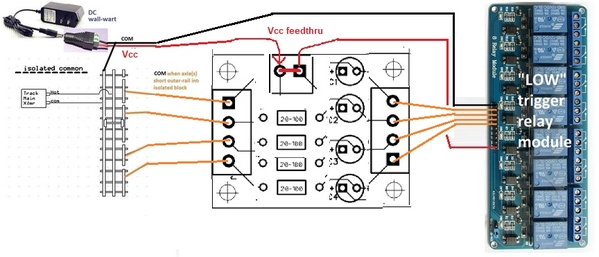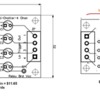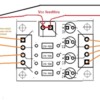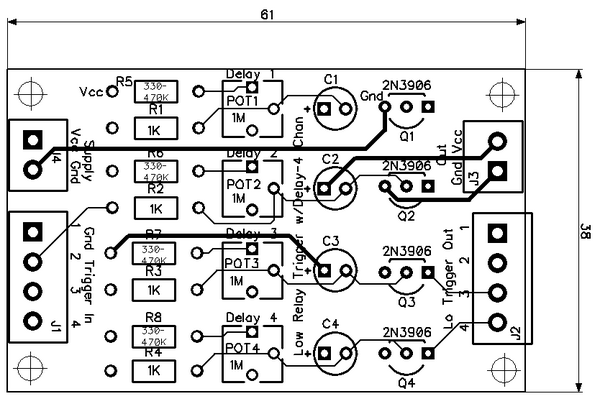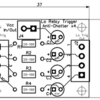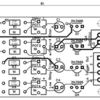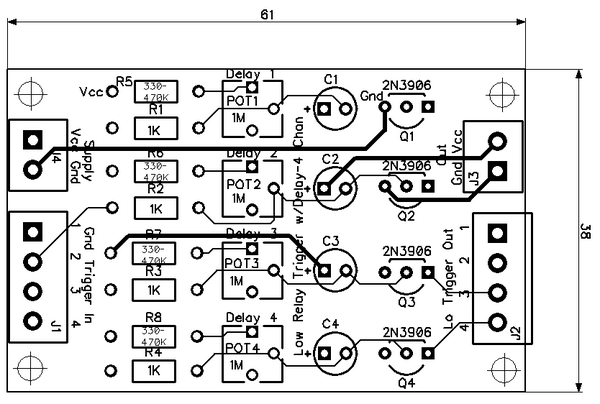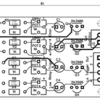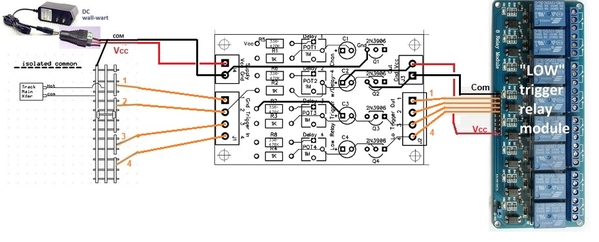So I did more testing of both 5V and 12V relay boards, and settled on some values that work about right. They are different depending on the voltage of the relay boards, per below. Note that I figure most of the time it would make sense to use the same power source for this board as will be used for the relay board, since they will likely be located close together.
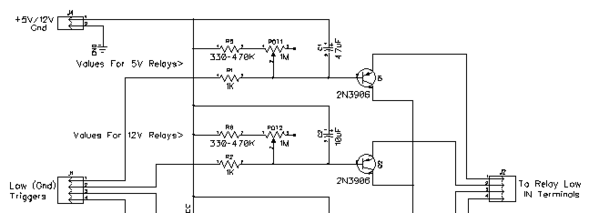
R1 and POT1 stay as they were at 1K and 1M respectively. R5 can be 330-470K; not critical. C1 can be 47uF for the 5V case, and 10uF for the 12V case. These values give delays in a range of about 5 to 12-15 seconds, which seems about right.
Here is a prelim board layout. Size is 67 x 43mm and its all cheap easy to solder through-hole parts. You could save some space by using SMT parts, but since this will likely be mounted under the layout there is no real need. The headers are sized for 3.5mm pitch screw terminals (ie KF-350 style) to make connections easy. The only somewhat pricey parts are the pots; though Stan attached an AliExpress source above which is very reasonable.
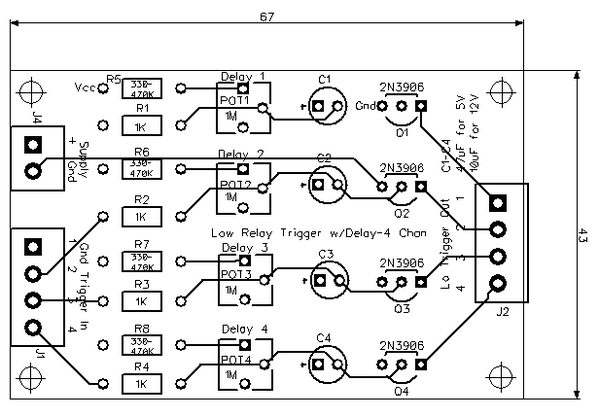
The whole purpose behind this board is to have a convenient easy to hook up spot in which to mount the anti-chatter filter parts necessary when using isolated outside rail relay triggering, for up to 4 separate channels. The adjustable release delay (after the train has left the block, similar to a 153IR) is a bonus that prevents re-triggering and allows a train to move a realistic distance away before the crossing gates, signals, whatever are released. The board is designed to use grounded inputs from the trigger rails, and to use the Low input of any of the commonly available offshore multi-relay boards. All I have done here is take Stan2004's excellent ideas and roll them into an inexpensive easy to build board. The next step will be to order a few boards and try them out!
To be clear my testing was done with this 5V version of the early "blue" boards (Lo only inputs):
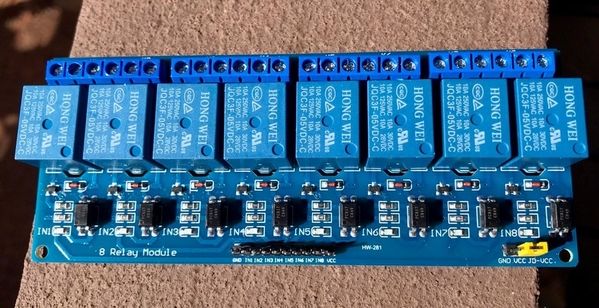
and the 12V version of the later "red" boards (both Hi and Lo inputs) like this one that Stan posted.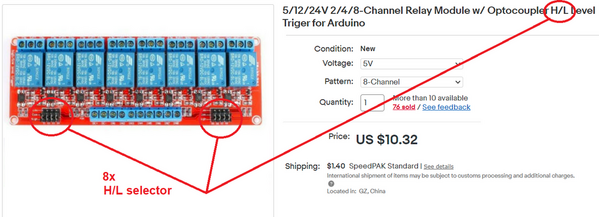
Each 5V relay draws about 70 ma when triggered, and each 12V relay about 50 ma. The trigger board itself draws a miniscule 10 ma or so, it's wiring can be very light.
Rod
![]()





